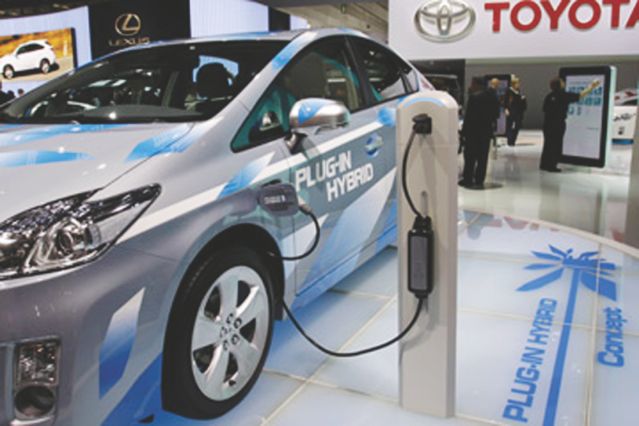News >> Sci-Tech
The Smart Grid
 22 Apr, 2013
22 Apr, 2013
Electric Vehicles (EVs) have been under scrutiny of the scientific community for quite a while now. Many of us have heard about them from various sources including the Internet and news magazines. Essentially, an EV is an automobile that runs on electric power. Conversion efficiency of an EV is quite high.
The Smart Grid, on the other hand, bears diverse identities. In brief, a Smart Grid is an electricity network that incorporates a suite of information, communication and other advanced technologies to monitor and manage the transport of electricity from all generation sources to meet the varying electricity demands of end-users. One of its multifaceted significance lies in load-curve shaping. Load-curve refers to the consumer demand pattern of electric power. This pattern varies according to time of day, week, months, and even years. Other factors such as geographical location, habits, socioeconomic growth also play important roles in this regard. From these curves, engineers are mainly concerned about demand peaks and the duration and timing of their occurrence. Later, the utility can carry out effective analysis of demand and match corresponding generation.
In a country like Bangladesh, electric power demand almost always exceeds the supply. Even with an installed capacity of about 8500 MW, the maximum generation till date is 6350 MW. Considering the average everyday generation and demand peak, the deficit hovers around 500 MW. On the other hand, during off-peak hours, many ‘peaking power generators’ remain idle. This is exactly where the EV fits in.
From an electrical point of view, an EV can be modelled as a rechargeable DC battery. Functionally, it is no different than our regular appliances that make use of any kinds of batteries. However, with the advancements of the Smart Grid, bidirectional transfer of power is now possible. This development opens a new dimension in dealing with electric power demand peaks: Peak Shaving. As the name implies, the peak can now be ‘shaved’ by energy storage devices that charge during the off-peak hours and discharge back to the grid during times of need.
Generally, an EV charges from the grid during night. It operates the rest of the day as desired by its owner. However, two cases are possible here. One is the battery exhausting within the day’s usage and one or more extra charging is required. Luckily, studies indicate that over 90% of the daily private car use is restricted to less than 20km, whereas even the popular Toyota Prius EV ensures a 24km with full charge. This ‘battery draining out’ probability is therefore unlikely. The second case, therefore, is more logical where the car is left with residual energy. Consider now, this battery is capable of supplying power. So, if the vehicle is connected to Smart Grid during the peak period, it can actually discharge into the grid and help narrow the mismatch between demand and supply. This phenomenon also aids in voltage regulation.
Much has been said about the promises. Different states of the USA, Canada etc. have already applied these theories into practice. Although, as alluring as it may seem, there are some concerns, too, regarding this scheme. Examples include whether some vehicles will draw power during the peaks instead; whether a collective charging during the night period convert that into a peak as well; how well is the discharging efficiency and is the process economically viable and so on. Only time can tell whether the pros outweigh the cons, or vice versa.
The writer is senior year undergrad, dept. of EEE, BUET.
Source: Daliy star

